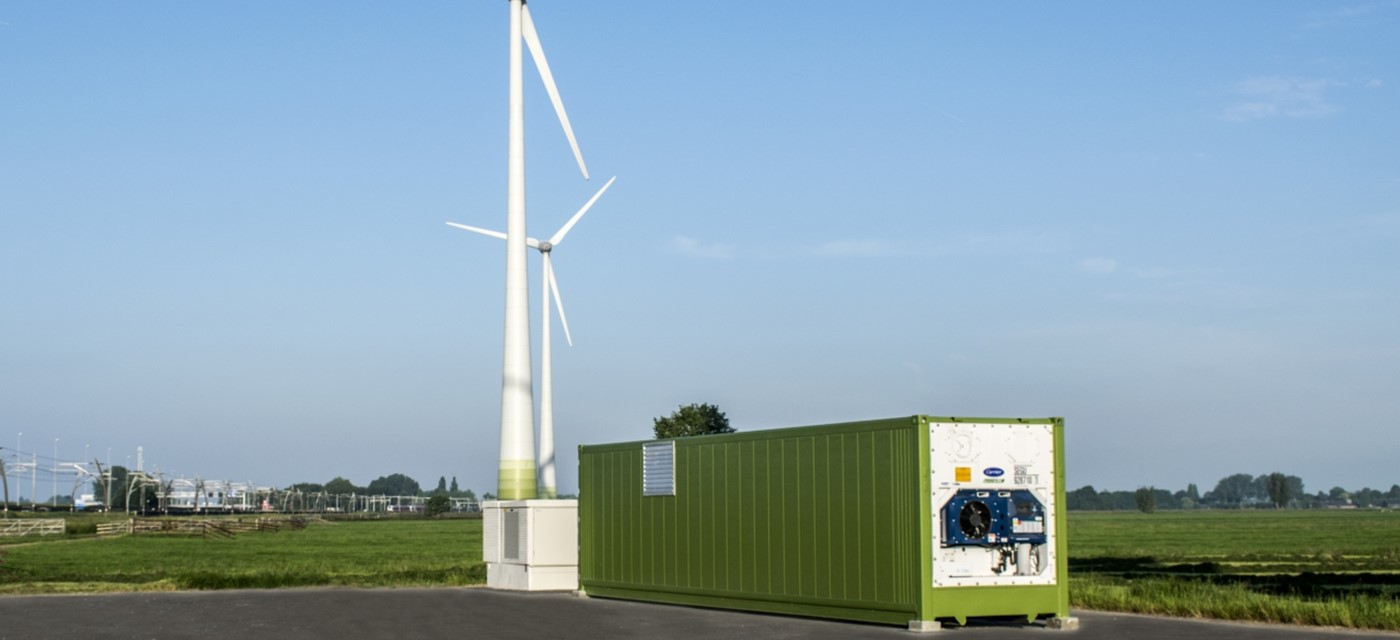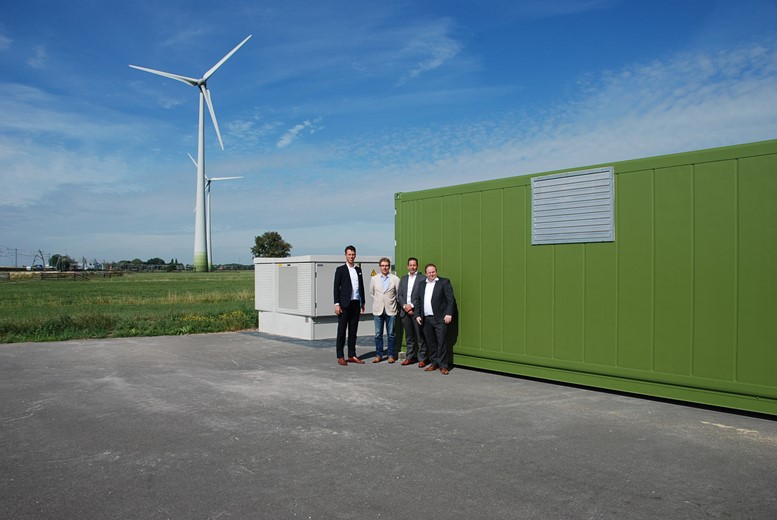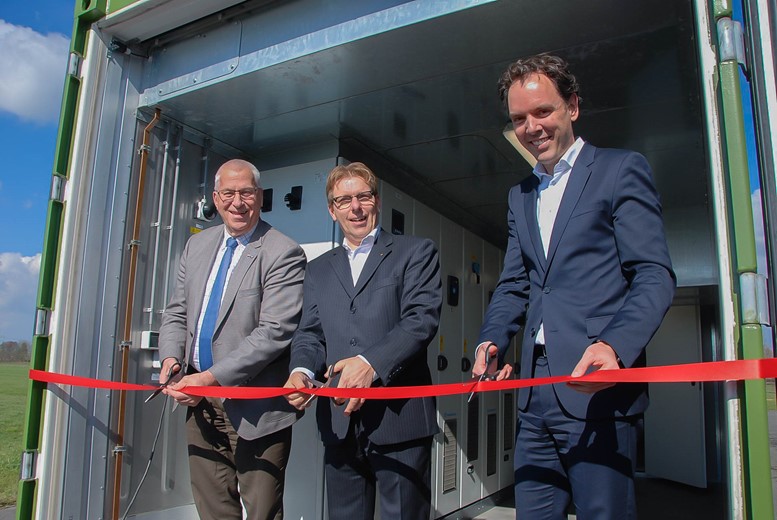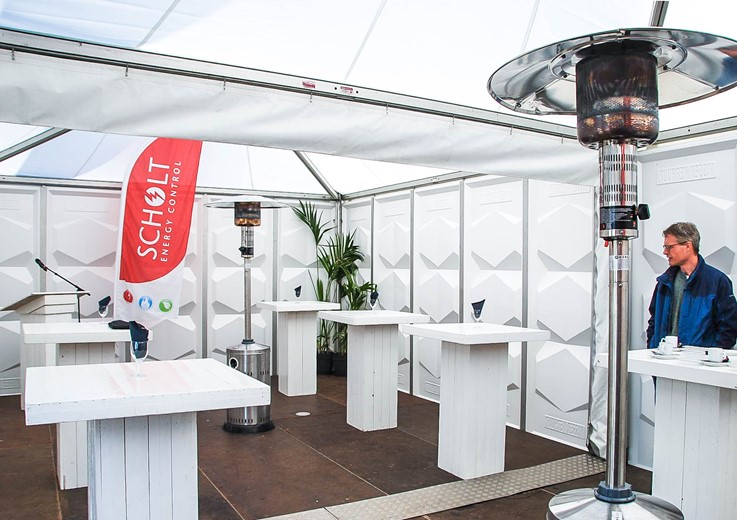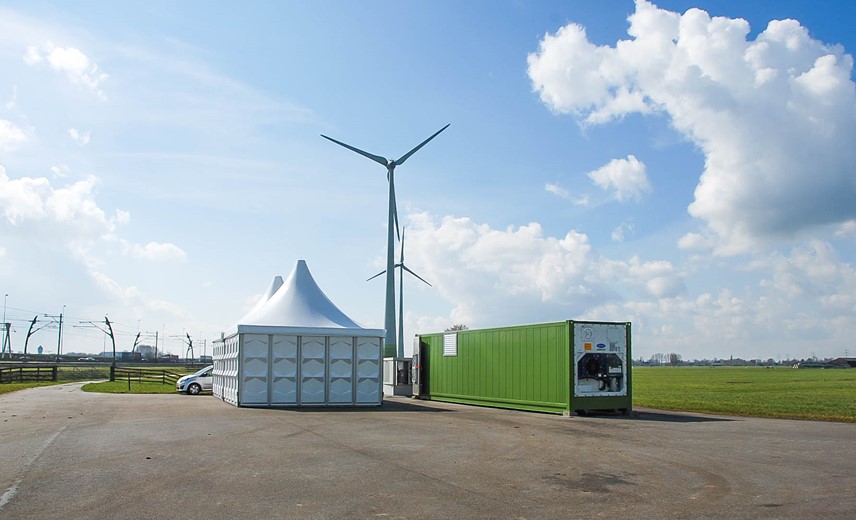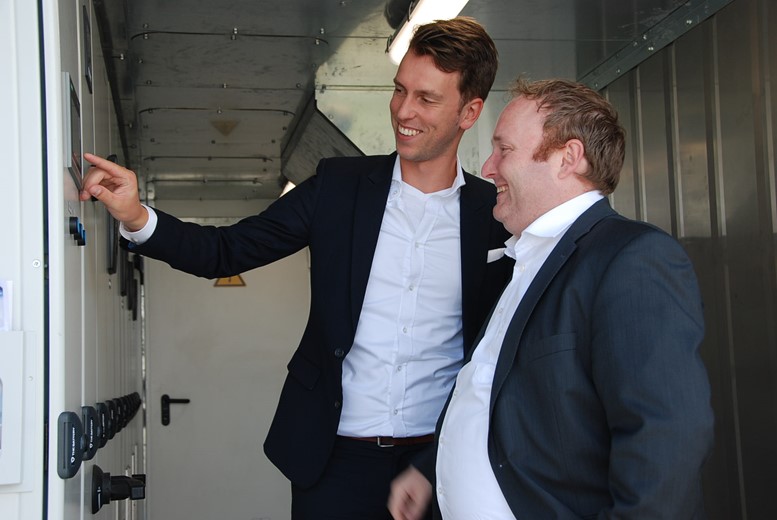Storage
At Windpark Giessenwind, a park with three windmills of 108 metres in height belonging to De Wilde Wind Holding, a battery of approximately 1 Mwh was emplaced in May 2017. Hereby, Windpark Giessenwind became the first in the Netherlands to be able to store energy on a large scale. The wind turbines collectively generate enough energy for approximately 5,000 households.
How does it work?
Seeing that the generation of electricity from sustainable energy sources such as wind parks fluctuates, energy storage offers great benefits. A battery lends support in balancing demand and supply of energy and thus helps to reduce costly infrastructural investments in the electricity grid. The storage of energy occurs primarily if there is a surplus of energy. By contrast, when there is a shortage of electricity the battery discharges, in order to be able to meet the demand for power. As a result, the grid becomes less burdened and the generated energy can be sold at favourable moments.
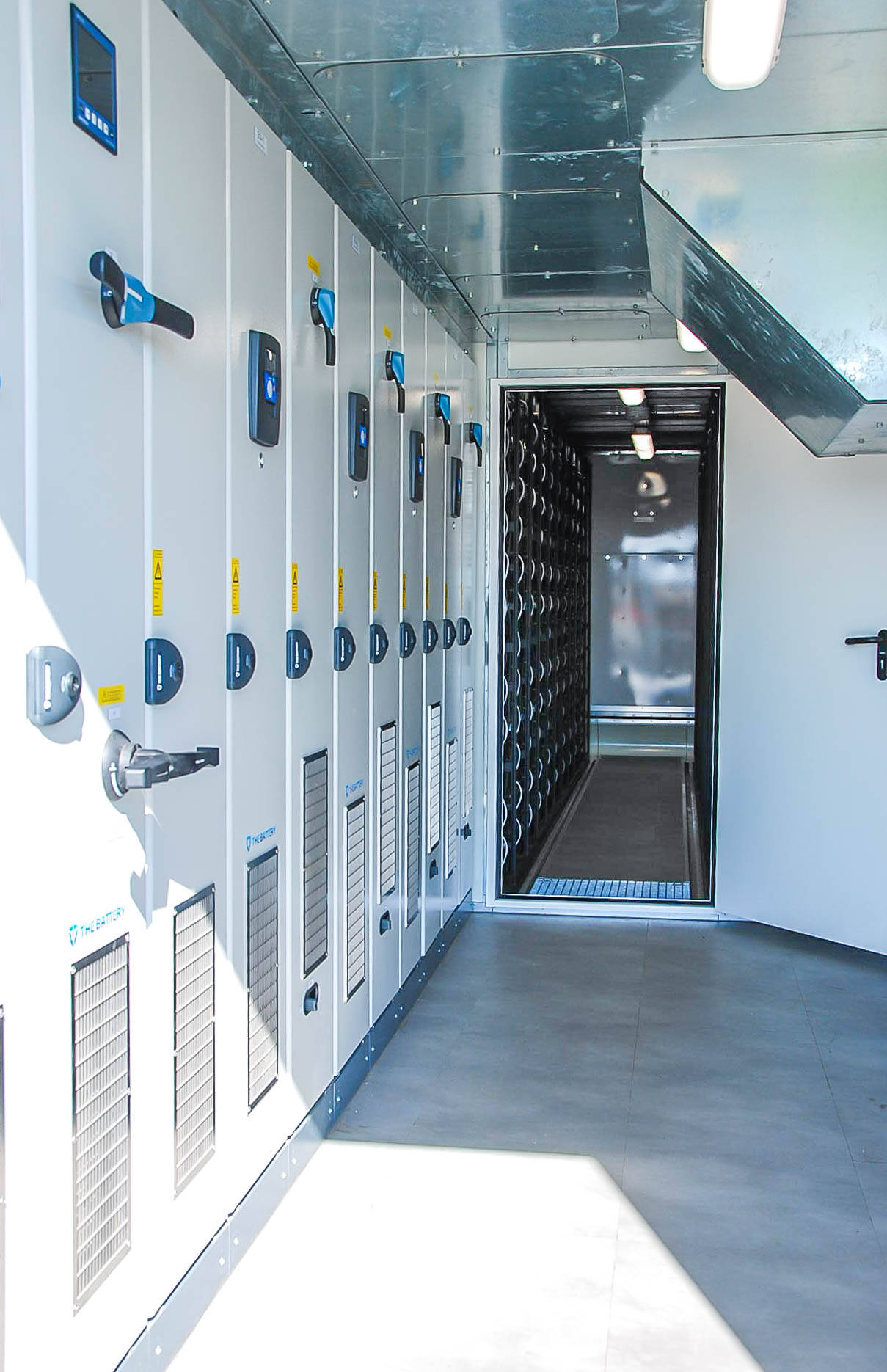
Increase in fluctuation
In the future, greater fluctuations in demand and supply are expected, due to the increasing production of renewable energy. To enable these fluctuations to be cushioned, the emplacement of a battery is a sustainable solution. Wind turbines no longer have to be shut down in the event of an oversupply and the net does not become overburdened.
“Sander Drissen: This set-up offers a sustainable basis for the future and can easily be expanded where necessary. We are also looking at other locations and applications, such as local net stability.”
Wim Meerkerk (Owner of Windpark Giessenwind): “Battery storage systems are necessary in order to implement our ambitions regarding sustainable energy on the Dutch electricity grid.”
